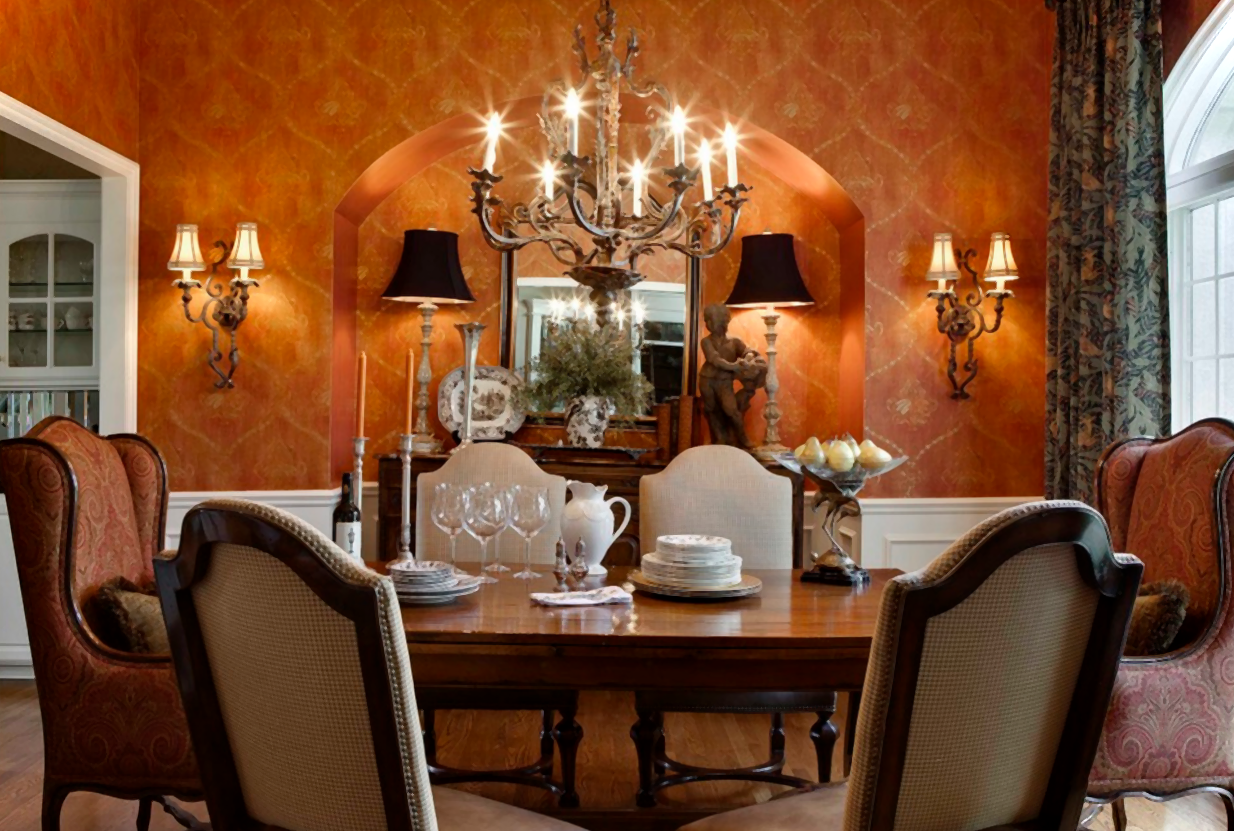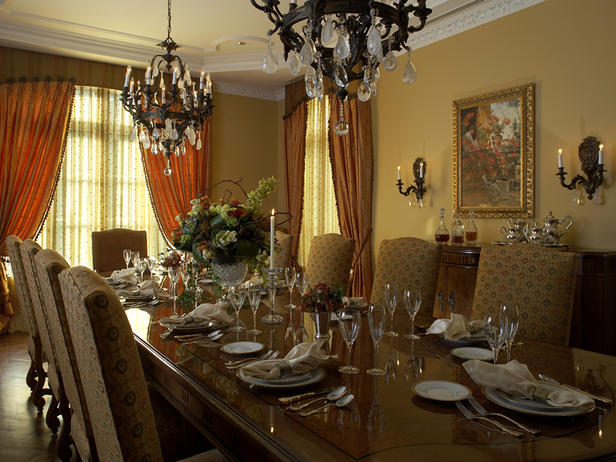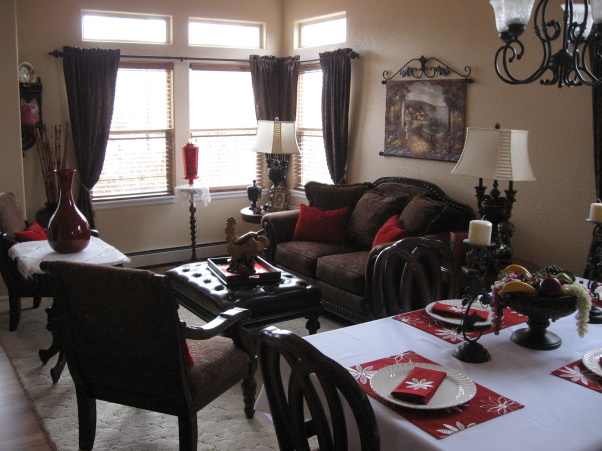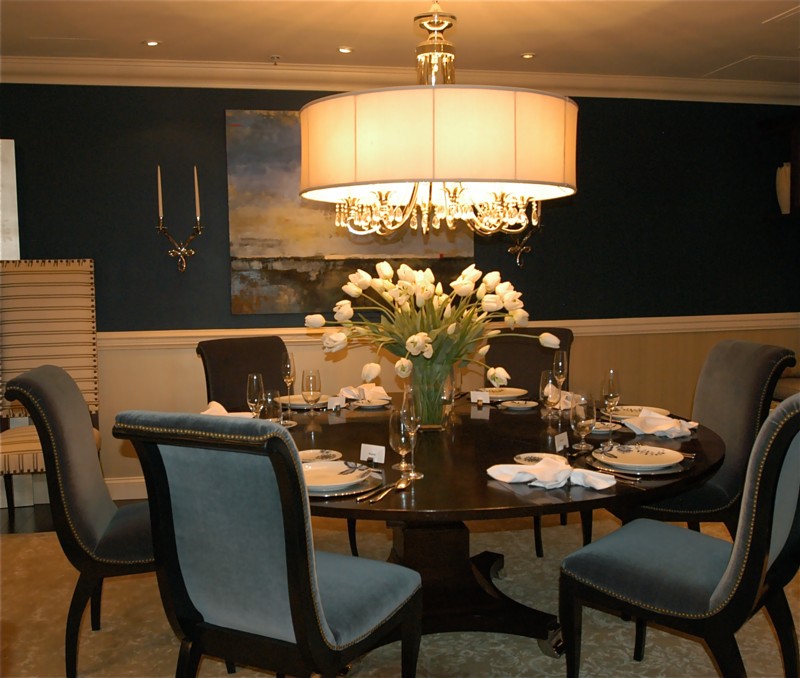The color red was traditionally thought to stimulate appetite which is why it was the color of choice in many formal dining room settings. Dining rooms were formally decorated, usually in heavy flock wallpaper at the time when coal fires were the norm and ladies and gentlemen dressed for dinner. In the vast dining rooms of the era when these dining habits were usual, and central heating still unheard of, ladies' décolleté required the warmth reflected off the rich reds and the textured wall coverings to absorb the warmth from the coal fires. This style has overflowed into other formal dining settings, often still the norm in various gentlemen's clubs and many formal hotels. However, dining room decorating is changing, with light airy themes now coming to the fore - possibly reflecting the change in dietary habits and menu choices.
Heavy colors were fine for heavy dining when many courses were the order of the day. Decorating ideas often still follow the sophisticated theme, but this sophistication is more often than not likely to be reflected in a light color scheme which, with Gustavian chairs and Waterford crystal glassware, provides a charm all its own. As blue is not considered to have any effect on appetite, choosing blue as a color scheme for your dining room decorating ideas really does mirror modern tastes, reflected in fewer courses and less calories. There again, other popular colors for dining room settings are champagne, cream and beige, or neutral magnolia. Natural lighting best suits the modern ethos of these of decorating a dining room, although a well-lit overheard rise-and-fall lamp makes an ideal lighting accompaniment. To complete the decor, make the maximum use of the windows you have available and, for small windows, reduce the amount of drapes - perhaps by using muslin in place of heavy curtaining.
To make decorating successful you need to achieve a room in which you can relax - and that includes keeping clutter to a minimum. Keep spare table linen neatly stored away in an attractive dresser, or other piece of furniture that has sufficient drawer and cupboard space for a home to be found for place mats and napkin rings. There is still a lot to be said for the expanse of the traditional sideboard that used to have pride of place in many dining rooms. Smaller houses seem to preclude the traditional style of sideboard as few modern houses would have sufficient wall space available against which to stand a long sideboard. However, even with smaller houses, height can be taken into account and an attractive piece of furniture with proportions that are tall rather than long would be a welcome addition to any room and can be easily incorporated into many dining room decorating ideas.
While few of us in these busy times have sufficient inclination to bring out the best damask tablecloth for everyday dining, and reports indicate the few families now sit around the dining table more than once a week.
Executive apartments always include a smart dining area in their plans and young couples would expect to include a designated area for dining. Many homes nowadays often only have space for a dining room segment of their living room or an eating area in their kitchen. If this is the case, it is still possible for ideas to be applied and, rather than focusing so much on the fine dining experience, they can incorporate pine bench seating and a pine table or, if money is particularly tight, one of the many black ash dining suite products.
Dining room decorating has come a very long way from their origins and now, as all other decorating ideas. Decorating is a personal reflection of each person and, in the frenetic lives of the 21st century, we don't have time to sit all evening in subdued elegance of a red flocked dining room. These days, anything goes and, as long as it works for you, your dining room decorating ideas should prove to be a great success.












